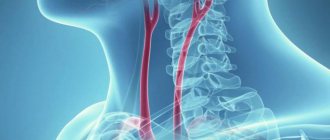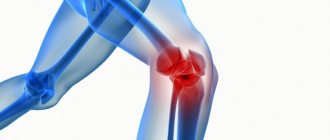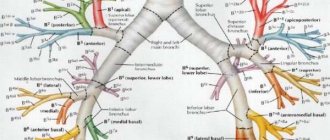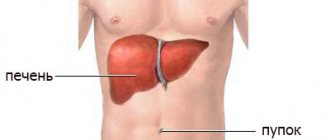The solar plexus in humans is a collection of nerve endings that are located inside the abdominal cavity around the main arteries that feed the tissues of the internal organs. In medical terminology, this part of the human body is also found under the definition of “celiac or nerve plexus.”
The solar plexus in humans is a multiple number of nerve endings and nodal connections that are interconnected with the internal organs of the peritoneum. Concentrates a collection of nerve cells of several types.
The celiac plexus is located below the diaphragm, and its nerve endings, nodal connections and branches take part in the nervation of the smooth muscles of the blood vessels of the gastrointestinal tract, spleen, diaphragm, as well as the kidneys and adrenal cortex.
The nerve plexus originates near the superior and celiac arteries (mesenteric) and extends to the upper intestine. This part of the body is the most vulnerable place.
The location of the solar plexus in humans
A fall or other mechanical injury that causes injury to the nerve plexus can lead to prolonged and excruciating pain. In medical practice, there are periodically cases where a blow delivered to a given part of the body causes death.
Functions
Due to the fact that the plexus is an important center of the peripheral nervous system with localization in the abdominal cavity, its main functions are related to regulating the activity of tissues of internal organs.
The purpose of the celiac plexus is as follows:
- timely contraction and relaxation of the smooth muscles of the walls of large blood vessels that supply nutrition to the internal organs of the abdominal cavity;
- acts as an indicator of a pathological process developing in the tissues of the gastrointestinal tract, spleen, pancreas, kidneys and adrenal glands (development of the inflammatory process, ulcerative formations, benign and cancerous tumors, provoke acute or aching pain in various parts of the nerve plexus);
- with the help of peripheral nerve processes and endings localized in the solar plexus area, information about the state of the internal organs is collected, which in the form of neural impulses enters the centers of the brain;
- takes part in the reflex contraction of the muscles of the stomach and intestines during digestion and assimilation of consumed food;
- regulates local blood circulation in large main vessels located in the upper part of the peritoneum (mesenteric and celiac arteries).
Damage or compression effects on the branches of the nerve plexus can lead to temporary dysfunction of internal organs, as well as cause the development of painful shock.
Characteristics of pain syndrome
The characteristics of pain depend on the type of pathological process, its duration, prevalence and cause of the disease. When making a diagnosis, specialists determine several characteristics:
By severity: strong, moderate or weak.
By nature: cutting, stabbing, sharp, dull, pulsating, burning.
By duration: acute (less than 6 weeks), subacute (6–12 weeks), chronic (more than 12 weeks).
By localization: in the middle of the epigastrium, in its upper part, lower, left or right.
Structure
The solar plexus in humans is located just below the diaphragm.
This part of the body consists of the following structural elements:
- right-sided and left-sided celiac nodes;
- splanchnic nerve endings of small and large types;
- superior unpaired ganglion of the nerve plexuses (mesenteric);
The celiac plexus nodes contain multi-processed nerve endings that form branches with sensory synapses. Nerve endings extend from the above nodes in the form of multiple branches. Outwardly, they resemble the rays of the sun's disk. This is where the name of this organ of the peripheral nervous system comes from.
Video
An anatomy video tutorial will help you determine exactly where the solar plexus is located.
Solar plexus
Types of diseases
The solar plexus is located below the diaphragm in humans, and its nerve endings are interconnected with the tissues of the internal organs. Attacks of acute or aching pain in the solar plexus are felt if a person suffers from the following diseases.
| Type of disease | Clinical manifestations of pathology |
| Gastritis | Inflammatory damage to the gastric mucosa, which is expressed in the manifestation of nagging pain in the central part of the solar plexus. Depending on the factors that caused the pain, discomfort may increase or decrease. |
| Stomach ulcer | Severe pathology of the digestive organ, characterized by damage to the mucous and epithelial layer of the stomach walls. The disease is accompanied by acute pain in the center of the nerve plexus. Depending on the location of the ulcer, the discomfort may shift slightly to the right or left. |
| Cholelithiasis | This is a disease of the digestive system, which occurs due to the formation of foreign stones in the gallbladder. In the presence of this disease, a person experiences sharp and cutting pain on the right side of the solar plexus. Pathological symptoms intensify as the stone moves toward the bile ducts, or when its position changes. |
| Pancreatitis | A dangerous disease of the endocrine system, which is characterized by inflammation of the pancreas tissue, occurring in acute or chronic form. The development of the disease provokes acute cramping pain on the left side of the solar plexus. Depending on the stage of the disease and the extent of damage to the organ, the pain syndrome can be shooting and pulsating in nature. It is believed that this type of disease can cause the most severe and burning pain from the solar plexus. |
| Gastroduodenitis | This is a pathological condition of the intestinal mucosa, which is associated with its chronic or acute inflammation. The presence of this disease causes nagging pain at the bottom of the solar plexus. The unpleasant symptoms feel localized in the middle of the abdominal cavity with a slight shift to the left side. |
| Inflammation of the duodenal mucosa | The mucous membrane of this organ of the digestive system can be affected by an acute inflammatory process or ulcerative formations. In this case, the nerve plexus may experience acute or chronic pain in the central segment of the abdominal cavity. Pathological symptoms become even more intense after eating sour, pickled, salty, fried and rough foods. |
Nerve endings, nodal connections and multiple branches of the solar plexus can be destroyed by infectious, viral microorganisms, as well as mechanical injuries. In this case, neuralgia or nerve contusion develops, the functions of the internal organs, the tissues of which are connected to the damaged celiac plexus node, are disrupted.
Links
Good afternoon dear friends!
I am glad to welcome you to. With you is an astrologer - Ekaterina Alexandrova.
Today our topic is the Sun.
As I promised in the first article, today I will tell you about the Sun.
Why didn't you start with the Sun, but start with the Moon? After all, the signs of the zodiac that we all know are determined by the Sun? I also asked myself this question.
At first I just felt that it was necessary, and then I realized that the moon is our soul, and since you and I are at the center of spiritual and psychological growth, this is precisely the theme of the moon. So it was not in vain that I started with her.
But I got a little distracted)
Today is about the Sun. Because the Sun is a star that warms us, gives us light and provides life on Earth. Likewise, in astrology, the Sun is not just a celestial body, but an energy that surpasses all other planets in its significance. And if the Moon is the soul, then the Sun is our Ego, our consciousness, our self-esteem and self-identification, self-confidence. The sun is associated with the active, creative principle and this is masculine energy, but it is possessed equally by men and women, because everything in nature is interconnected, masculine and feminine - Yin and Yang.
Also the Sun is our inner divine child and unconditional love.
The Sun Man is a person with a burning heart, enormous energy and a hot temperament. Such people rarely go unnoticed. They attract attention and love, and perhaps hatred and envy, but rarely does anyone remain indifferent to such people. The man of the sun looks impressive, he may have a large build, big eyes and golden hair, or maybe he looks differently, but you will always recognize him by his sparkling eyes, good disposition, big heart and active life position. He may look serious, but at heart he is usually friendly and cheerful. Such a big baby.
But this does not prevent him from becoming a leader. These people simply do not see themselves as subordinates. They are responsible, practical, proud, generous, love to be the center of attention and strive to gain power and become influential. In this they are very stubborn and persistent.
Often, people of the Sun achieve their goals and objectives, but it also happens that sometimes they fail and cannot achieve what they want. In this case, they worry very much and can withdraw into themselves and become isolated. As they say, their Sun “stopped shining.”
In this case, it is recommended to “light up” your Sun.
If we talk directly about the position of the Sun in an individual chart, then depending on its location, interaction with other planets, it shows your personal solar energy, which is given from birth and which can be used depending on how the Sun is manifested in you.
In the next article I will tell you the signs of a strong and weak Sun and give general recommendations on how you can work through it.
See you again!











